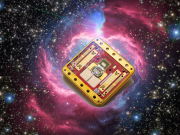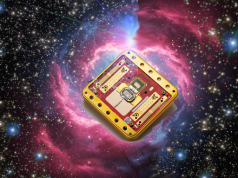 Touch screen tablets like the iPad or the Kindle Fire, and “touch-based” Ultrabooks now in development, are on a collision course with touchless, motion-based technology.
Touch screen tablets like the iPad or the Kindle Fire, and “touch-based” Ultrabooks now in development, are on a collision course with touchless, motion-based technology.
You’ve already “cut the cord” with your wireless mouse, your bluetooth keyboard and your gaming console controller. Now prepare to excise them from your work and play routines altogether. These kinetic devices are about to become the relics of a Kinetizoic era.
In a few short months, (a lot sooner if you’re a developer), you will be able to control your computer in Tom Cruise Minority Report-style with natural hand and finger movements. A $70 USB-powered device the size of a candy bar is the technological leap made by a company called LEAP Motion. Want to draw, paint, or sculpt in 3D? How about type, strum or search in thin air? The Leap’s sensors can distinguish your individual fingers and track your movements to 1/100th of a millimeter. That puts devices like Microsoft’s Kinect on notice.
Leap Motion is backed by $14.5 million in venture capital, has just started taking preorders for the $69.99 PC- and Mac-compatible device, which it plans to ship in early 2013. While no specific apps have yet been announced, over 25,000 software developer unit applications from 143 countries have begun to fill the ranks of a creative community that will propel computing into the advanced motion-tracking age. To apply as a developer, here’s where to sign-up.
Leap will leapfrog Kinect and Wii in dazzling proportions. but it is creating both competitive threats and opportunities.
What will likely prove the deciding factor, says SlashGear’s Chris Davies is the degree of refinement of any form of motion tracking. “If you’re swinging a sword around a virtual world, then your Kinect probably doesn’t need to be too accurate to satisfy. If, though, you’re trying to navigate a text-dense document or manipulate a complex graphics project, there can be no scrimping on precision. One of the key differences between a cheap tablet and an iPad or one of the more polished Android models is the responsiveness and accuracy of the touchscreen: if the manufacturer gets that wrong, and the finger-feel is off, owners will just give up on using it.”
Motion control technology could also rescue Microsoft from one of its more contentious Windows decisions. “Play it right, and Leap Motion – and others with it – could kill touch in traditional computing before its even had a chance to get started,” said Davies. Intel and Microsoft are pushing OEMs to deliver touchscreen ultrabooks running Windows 8, betting on there being a segment of users willing to pay for tablet-style touchwith the added input flexibility of a regular keyboard.

Where Microsoft can resolve limbs, Leap is following individual fingers. It could do what touchscreens and other technologies have failed to achieve in desktops and laptops to-date: convince the everyman that they’re fundamentally better than the good old keyboard and mouse.
An early favorite for gadget of the year at SXSW 2013, Leap Motion has submitted four panels for consideration to the conference SxSW 2013. Vote for your favorite SXSW panel online. [24×7]




















